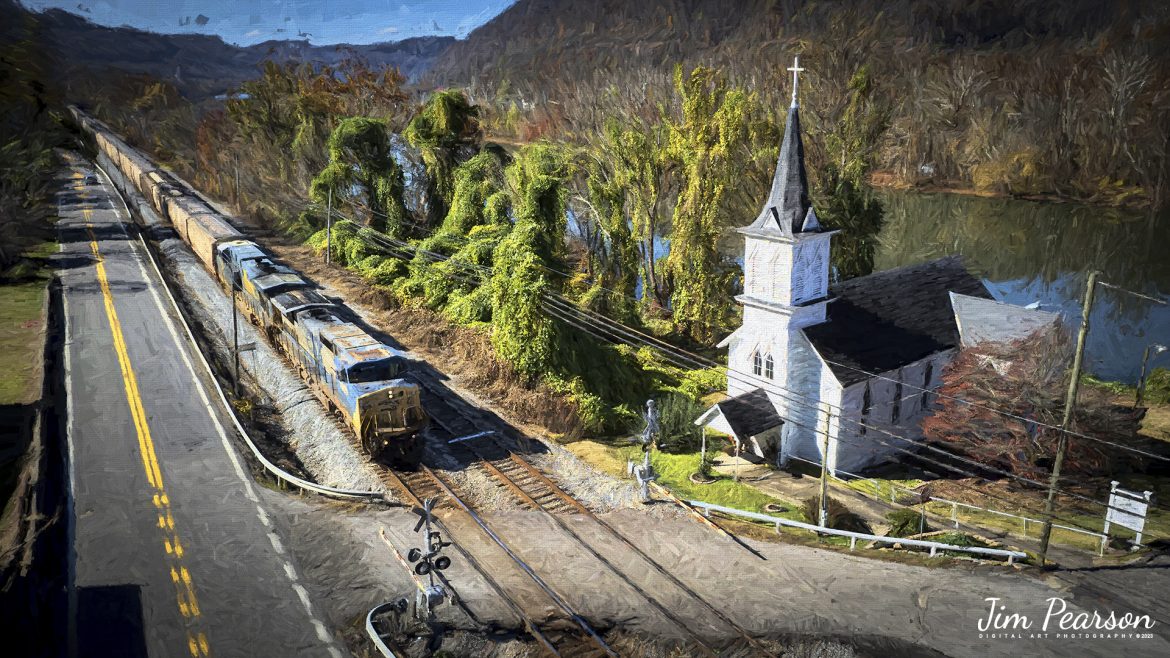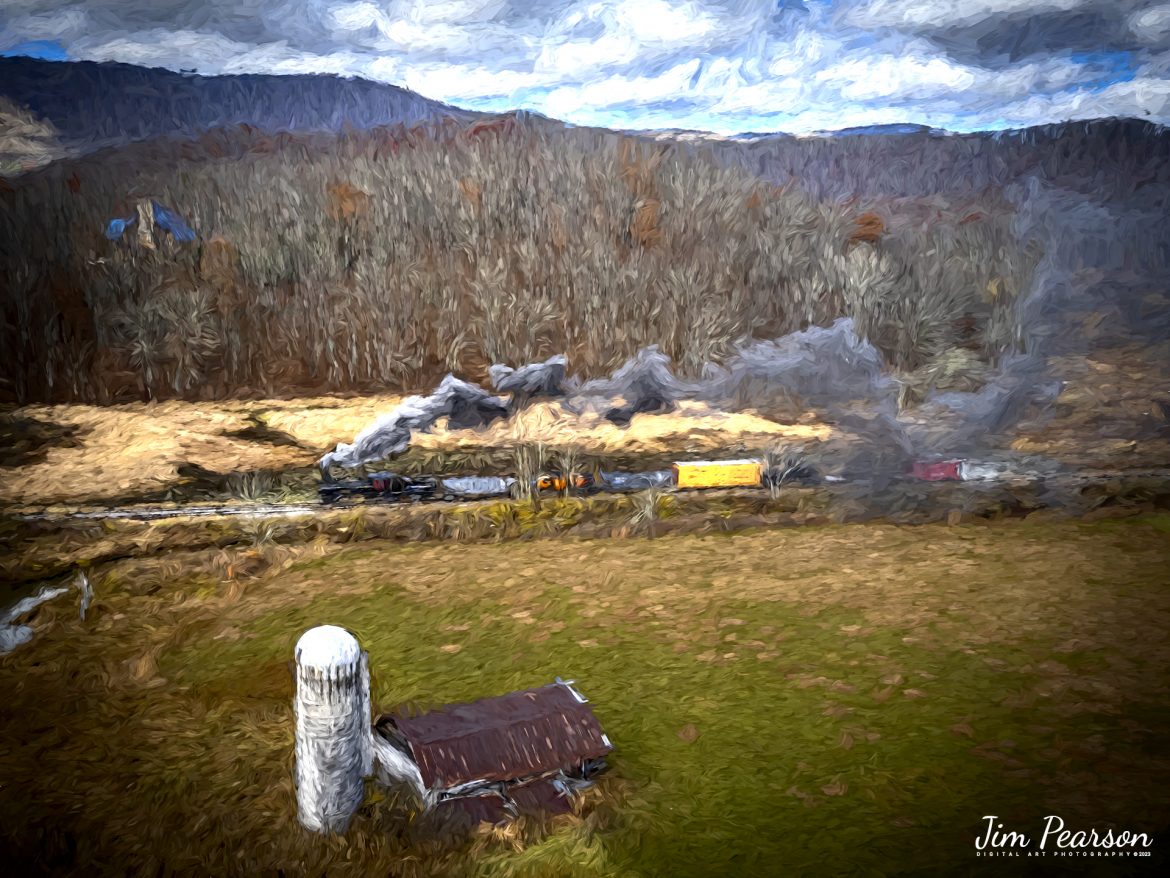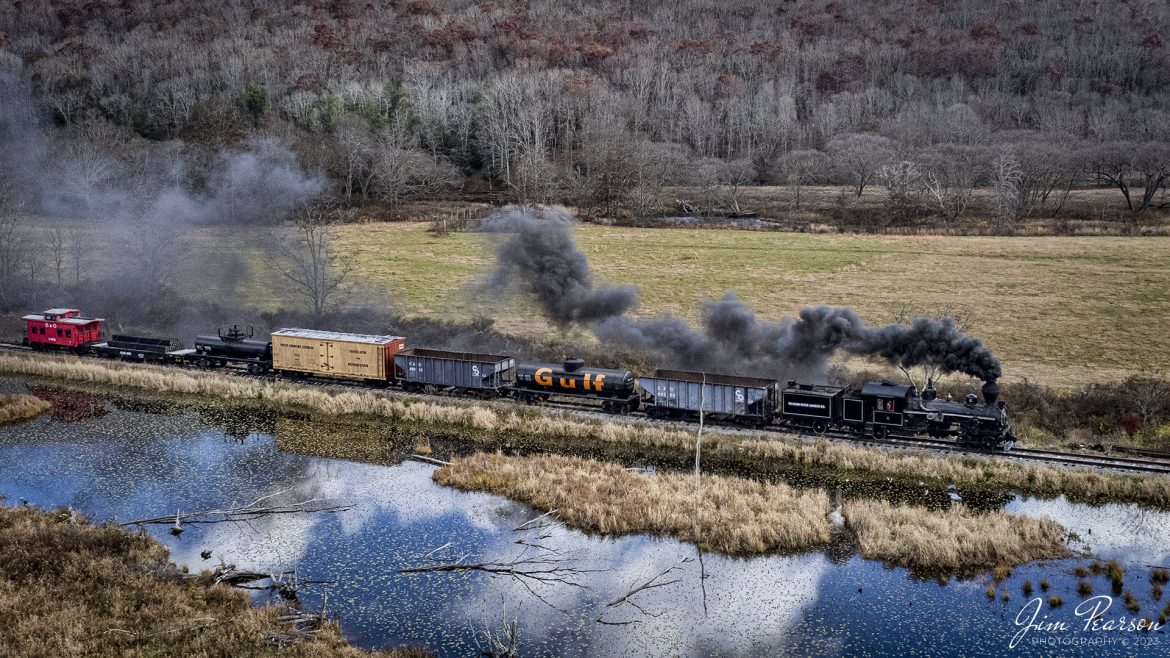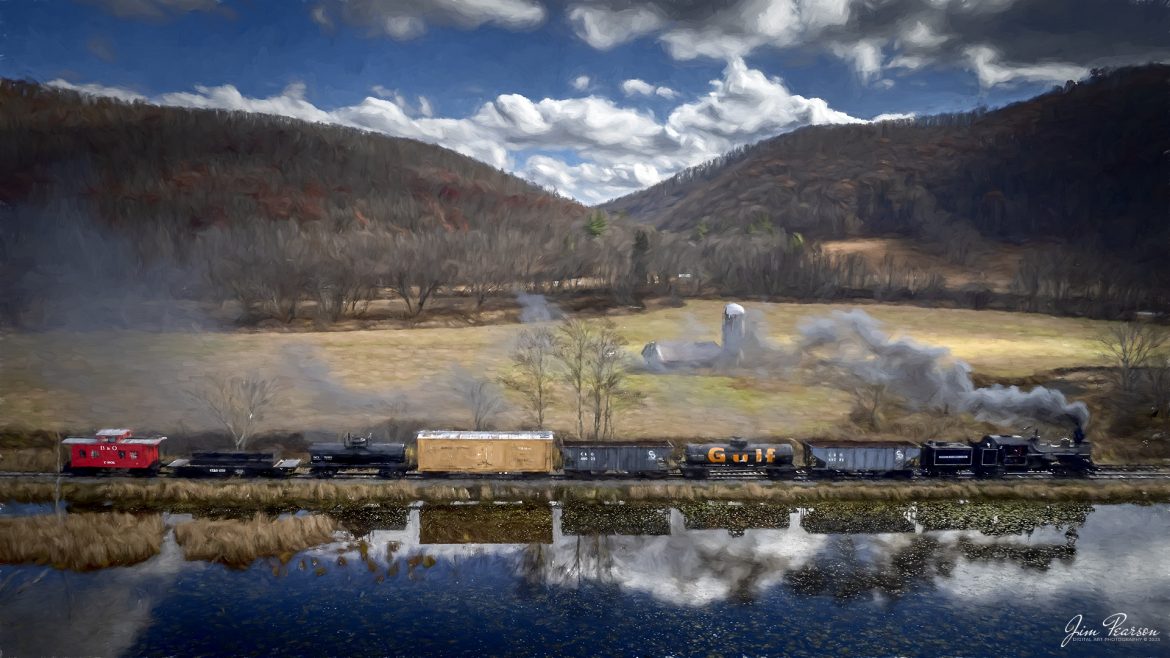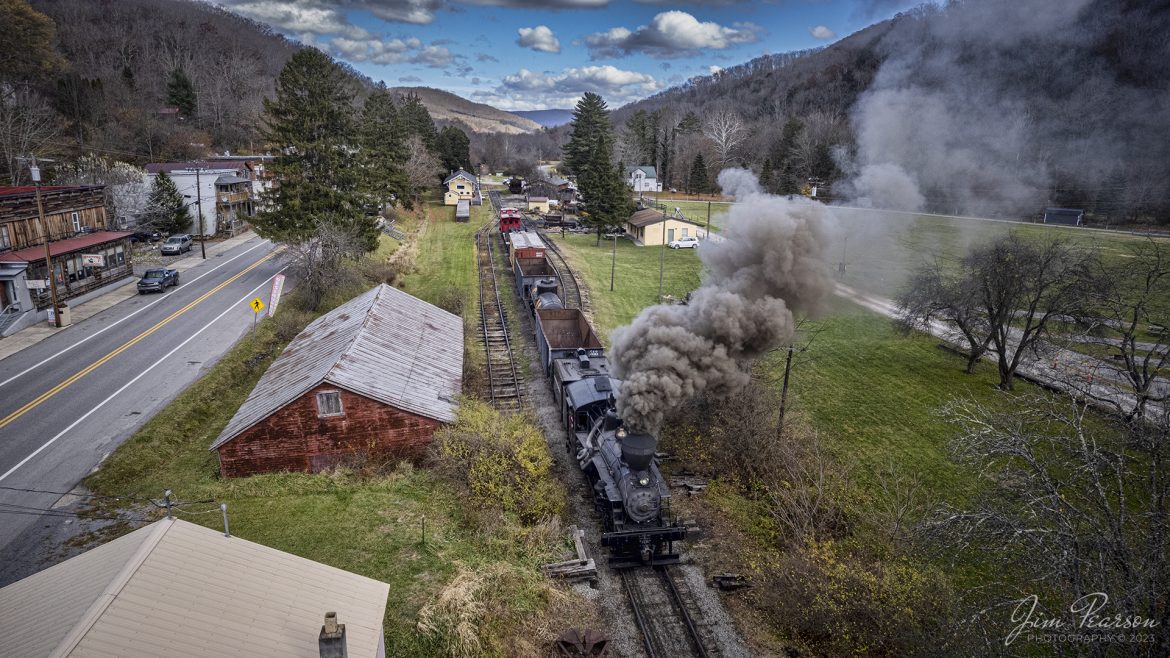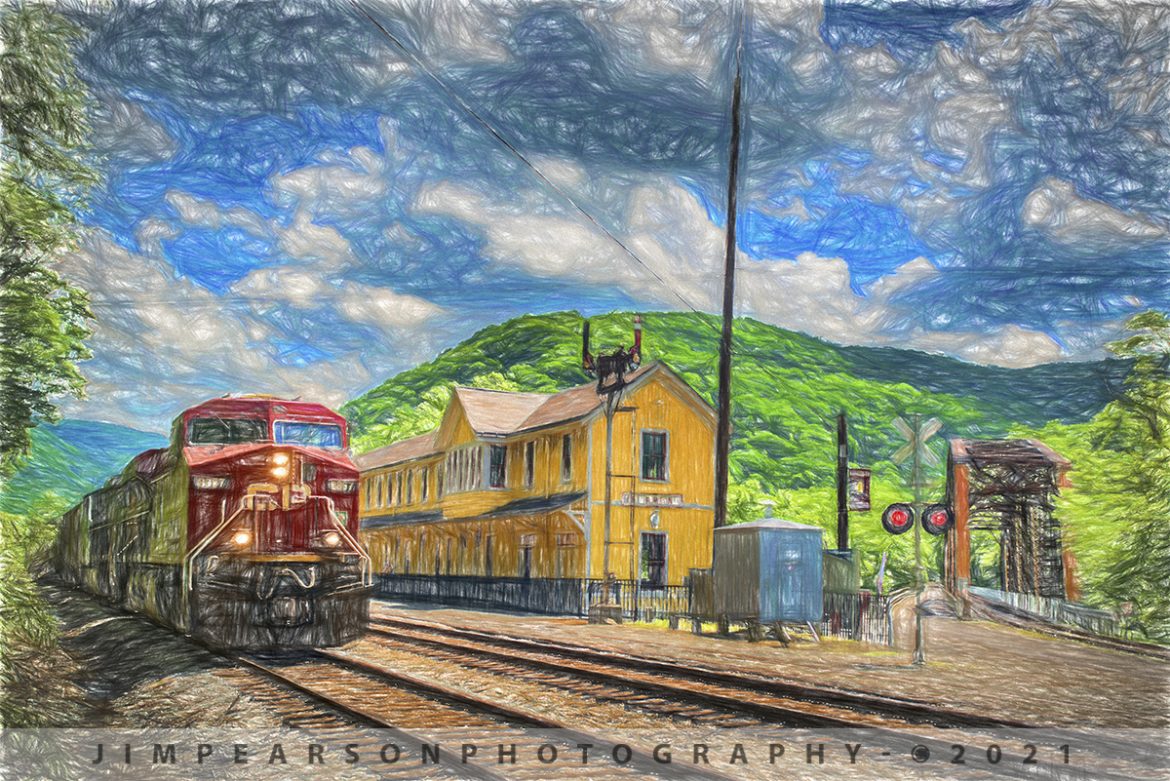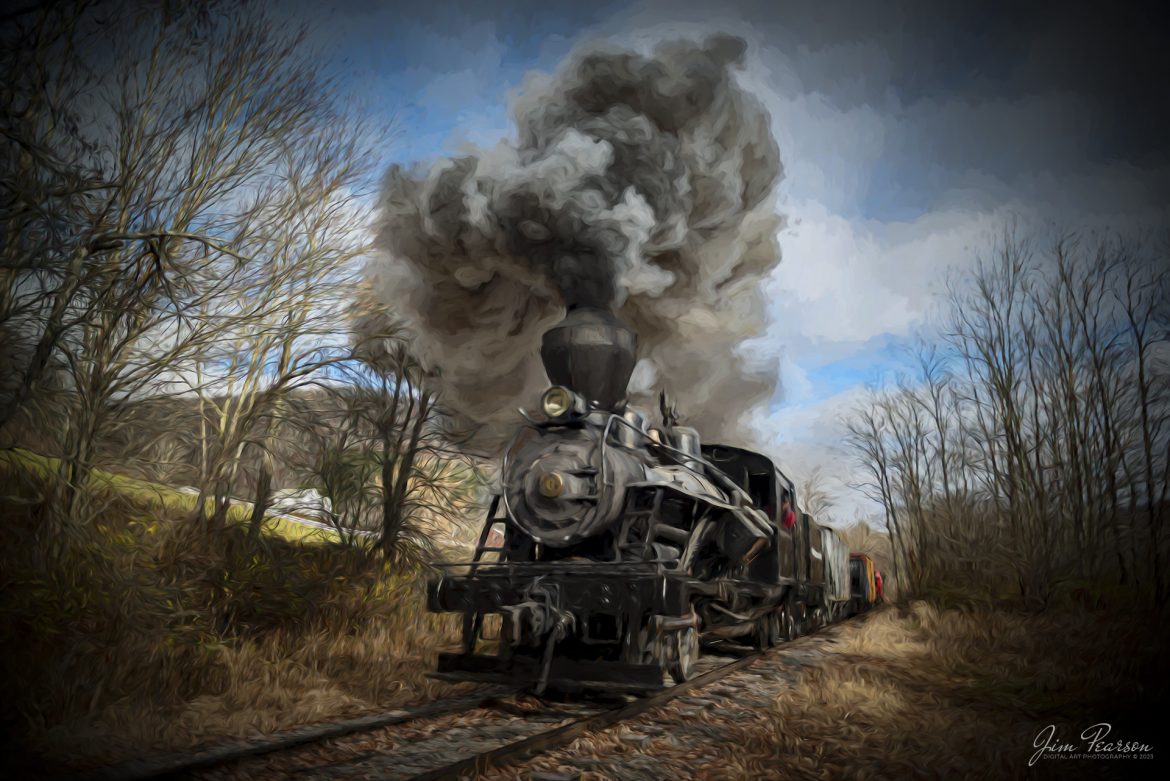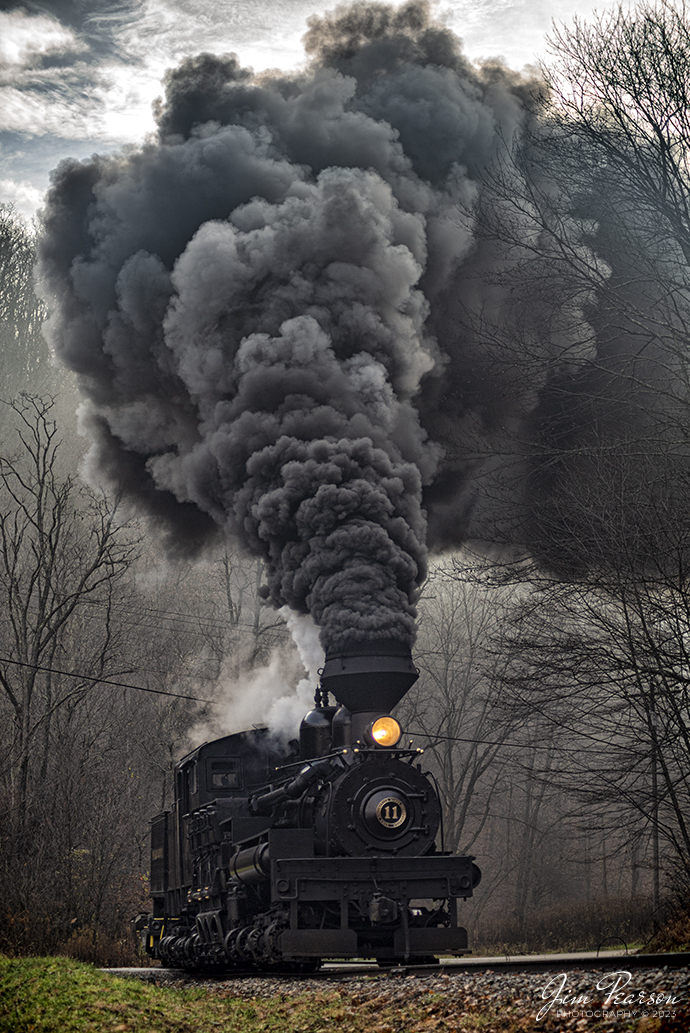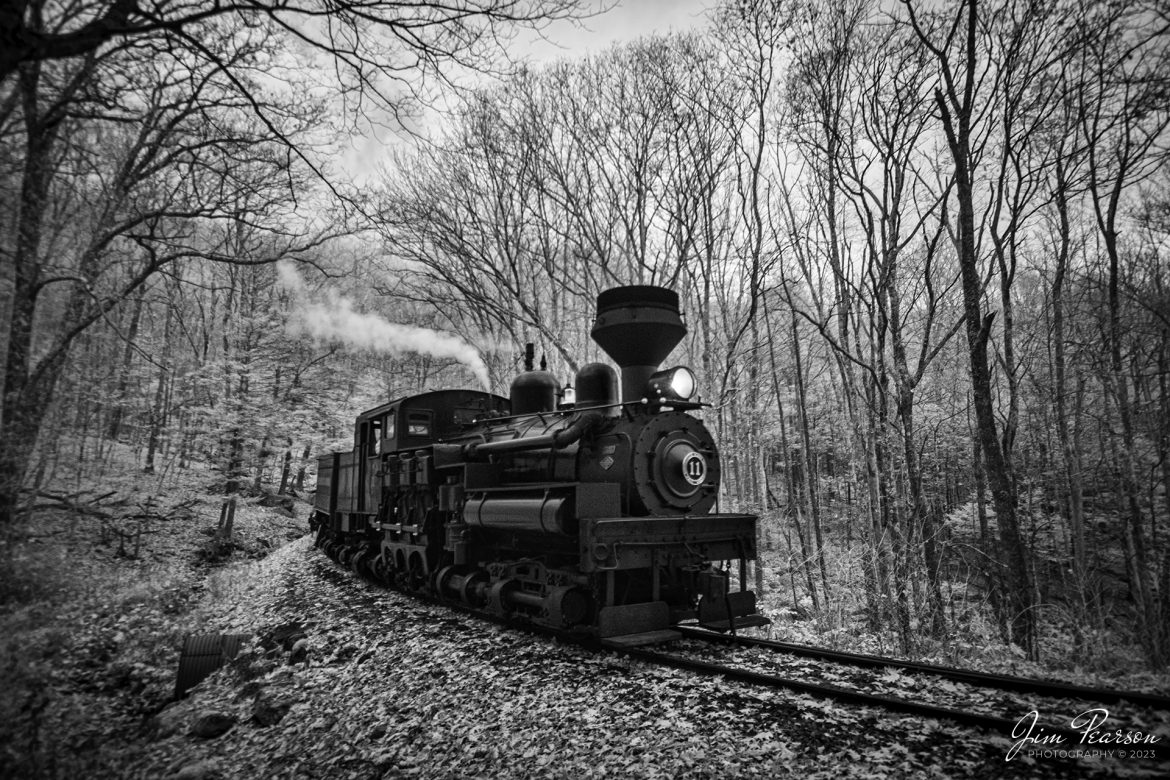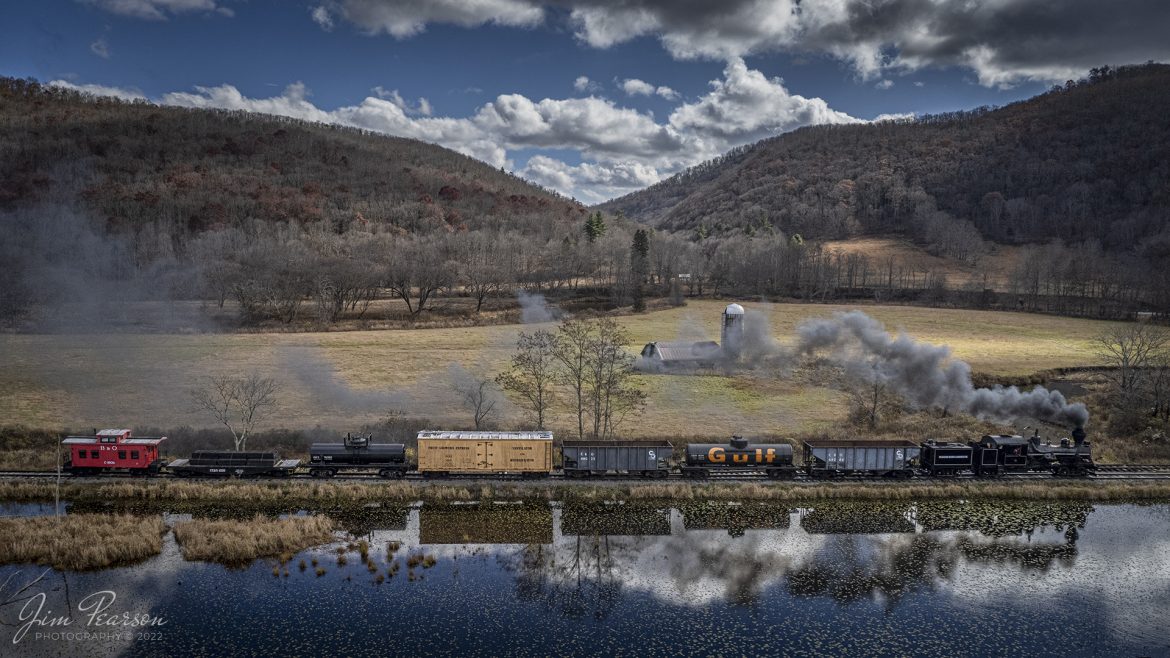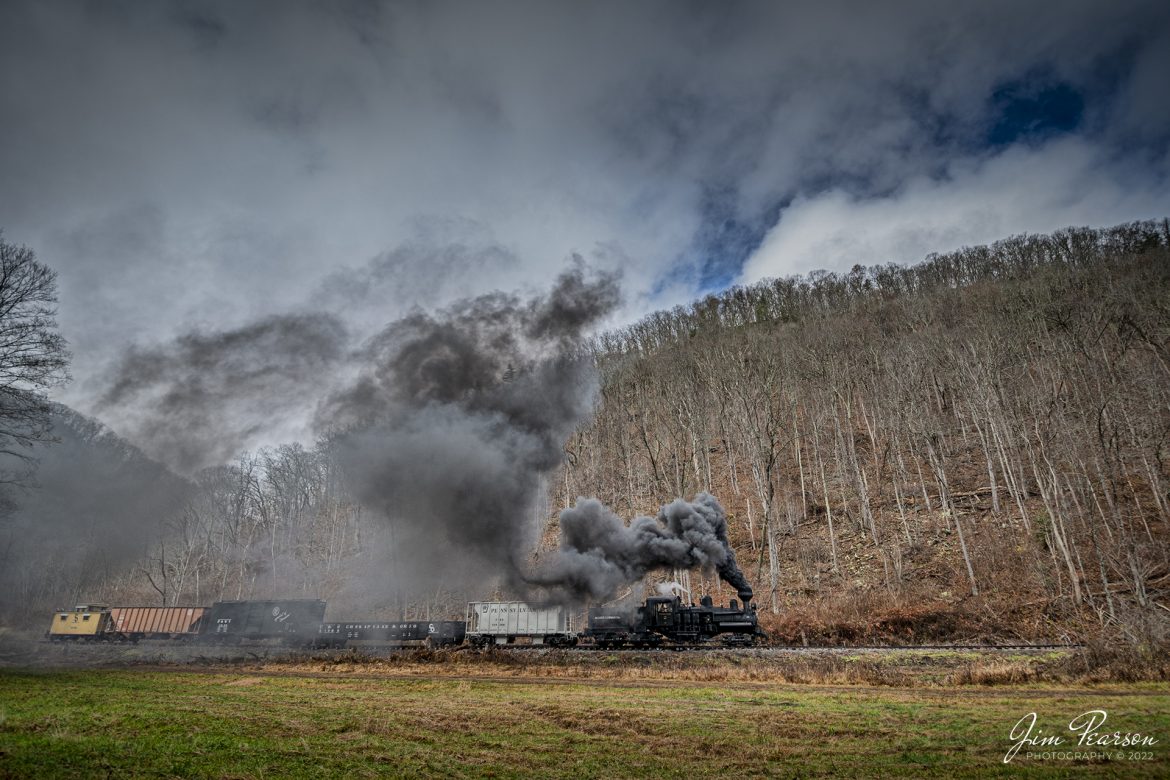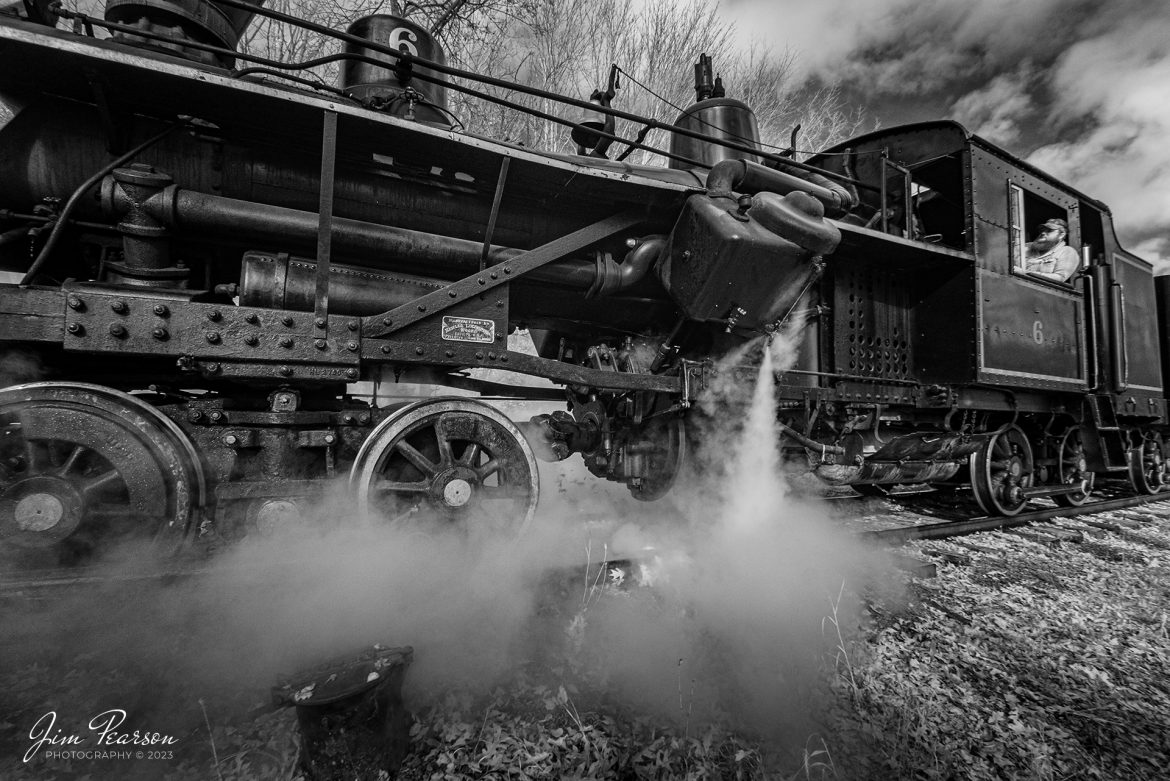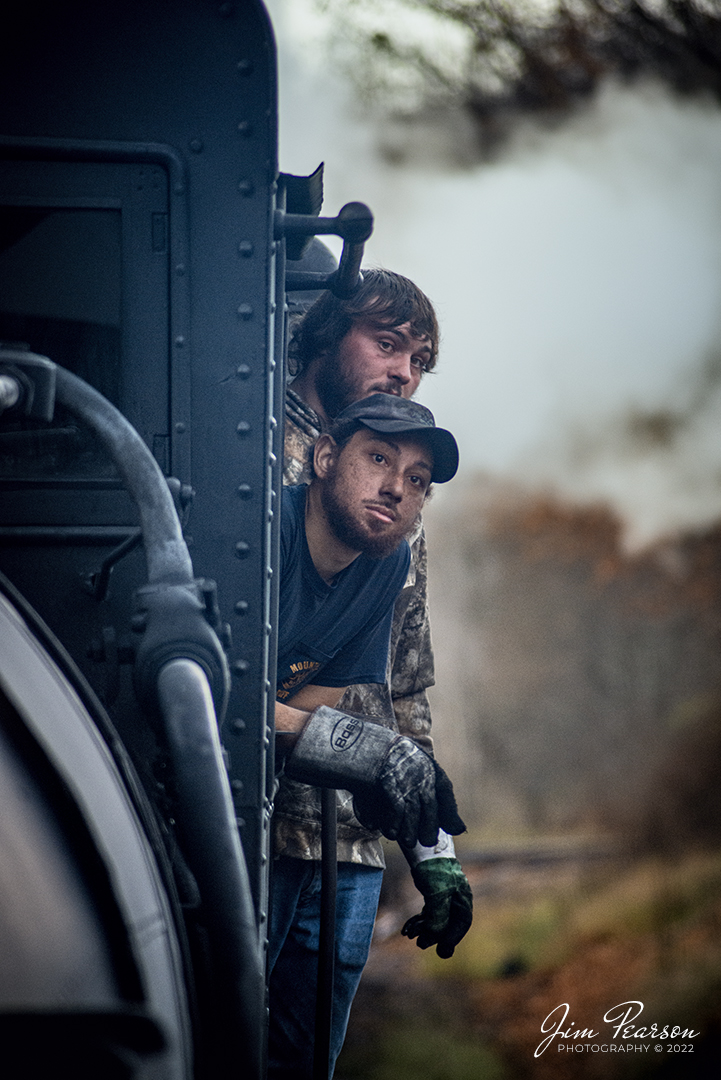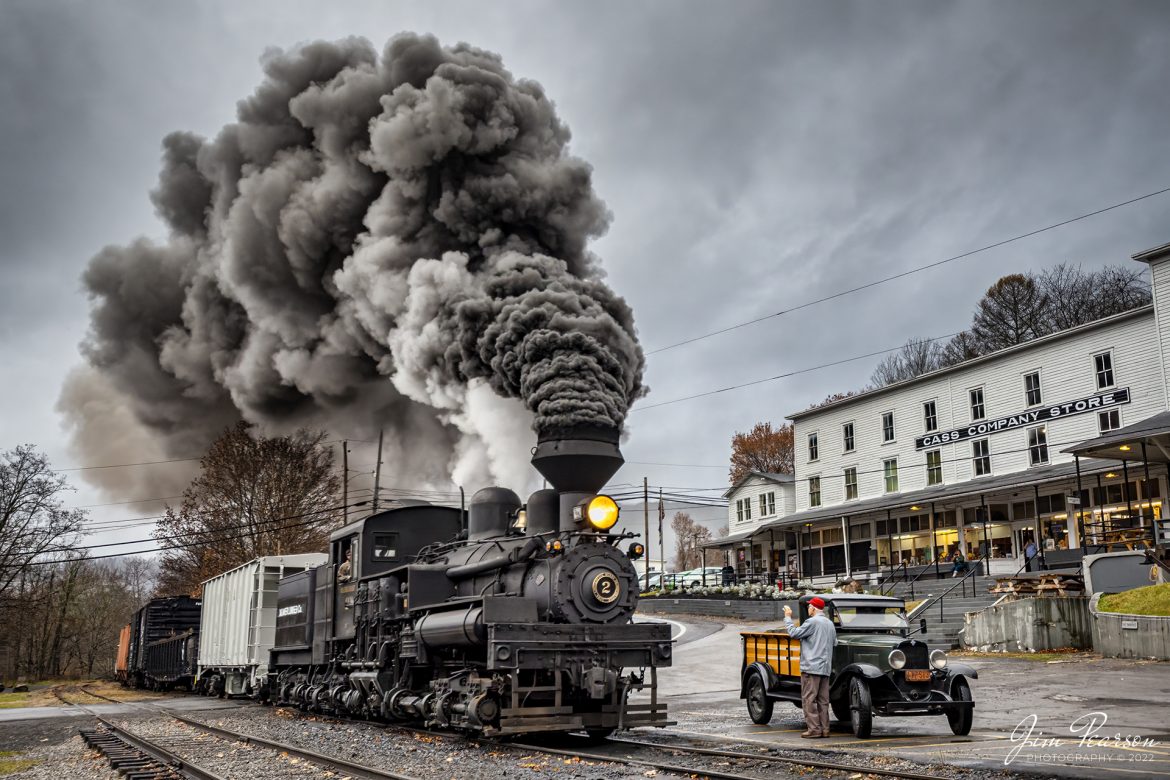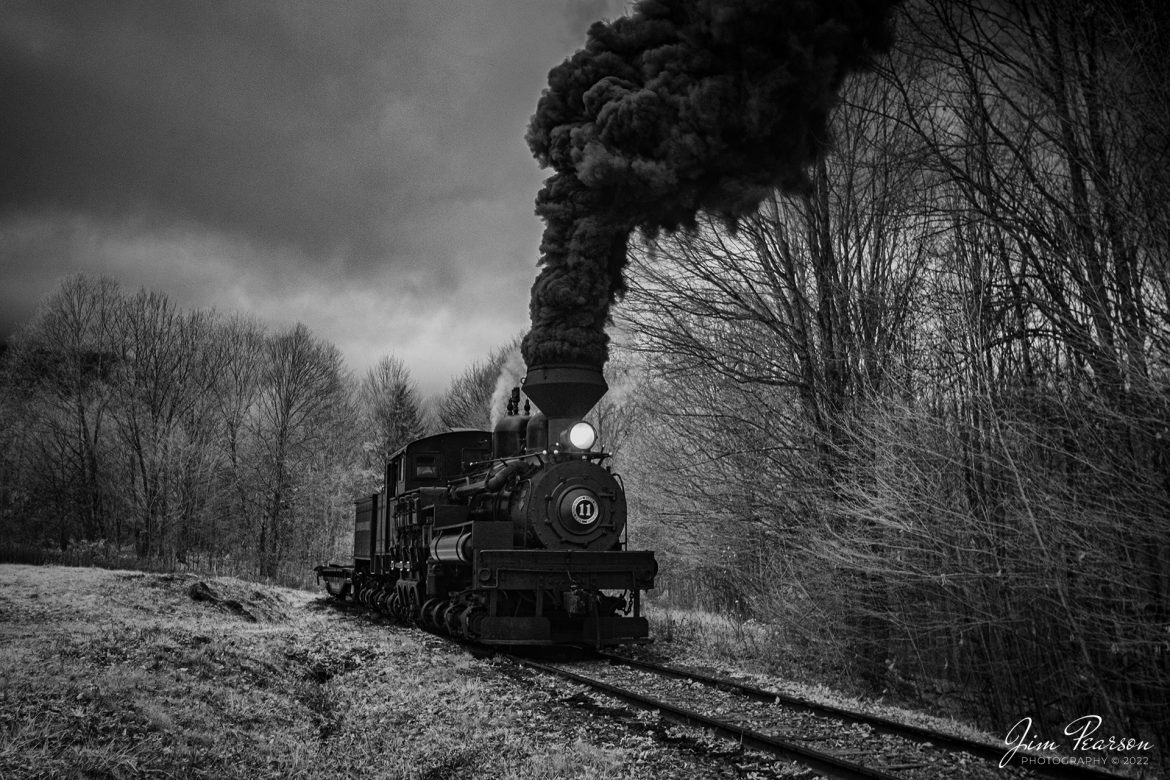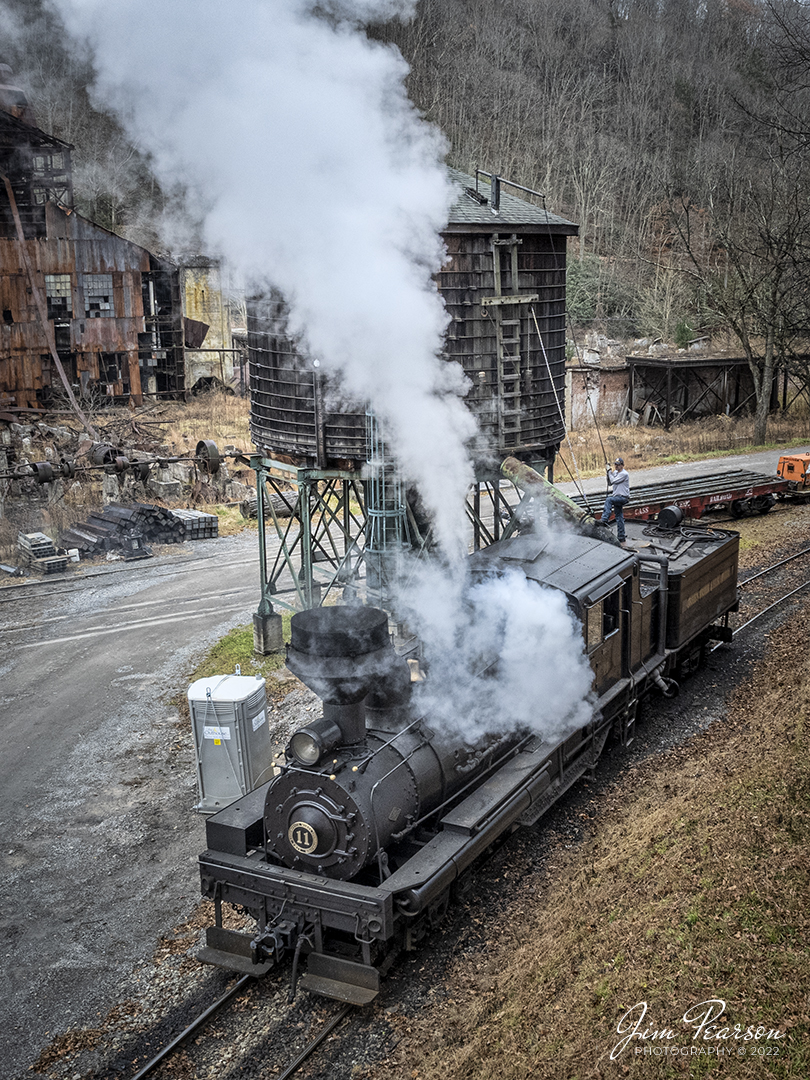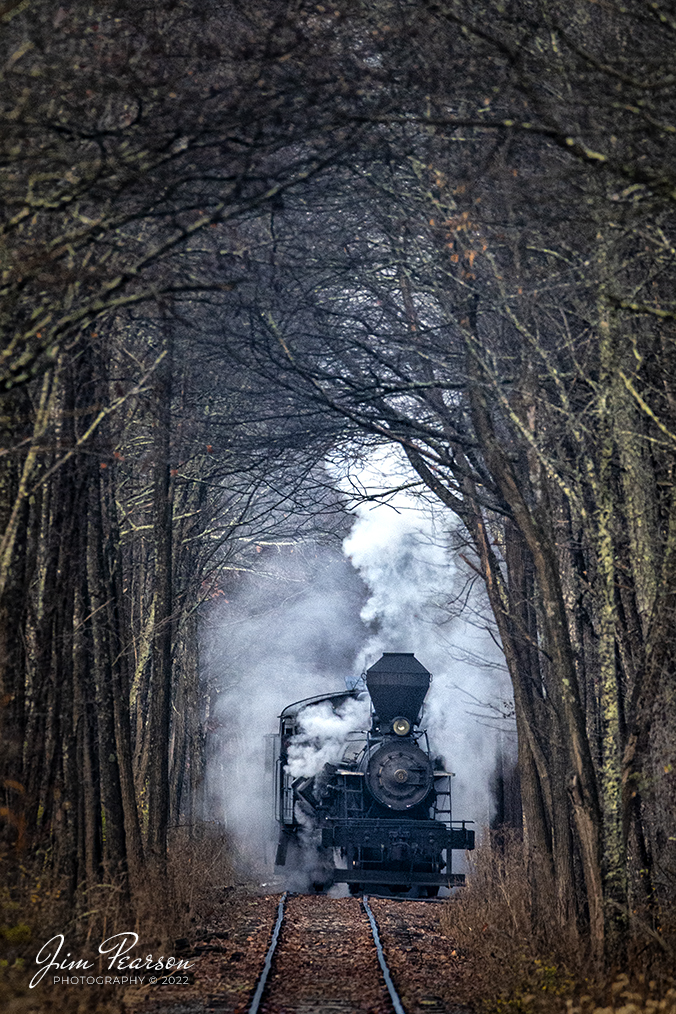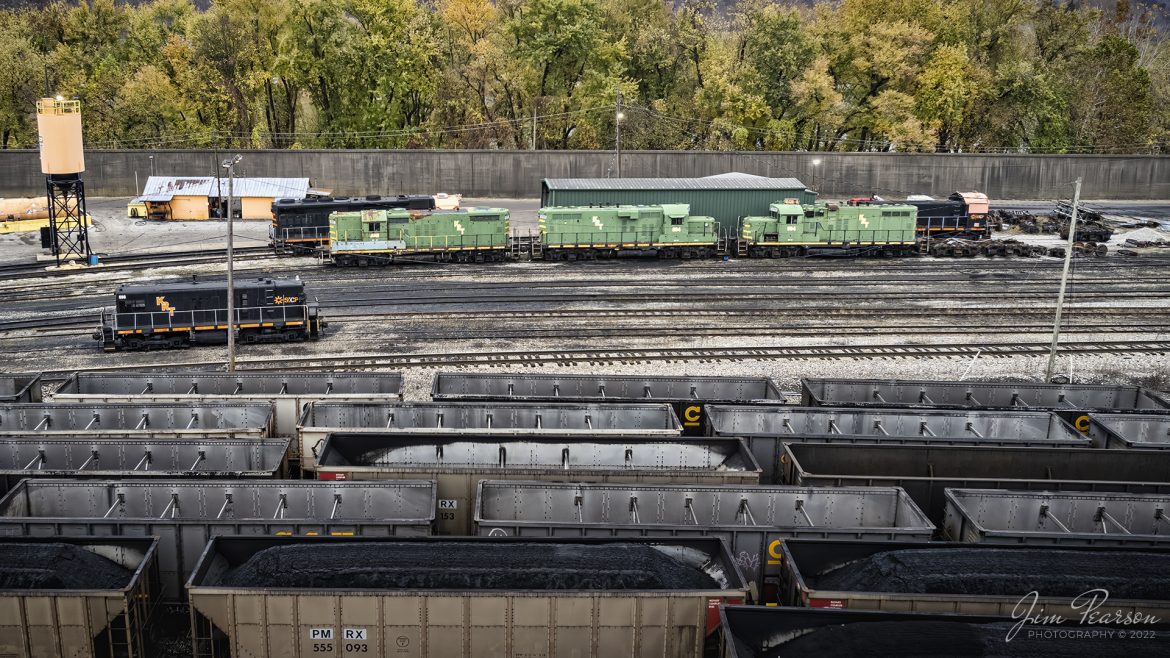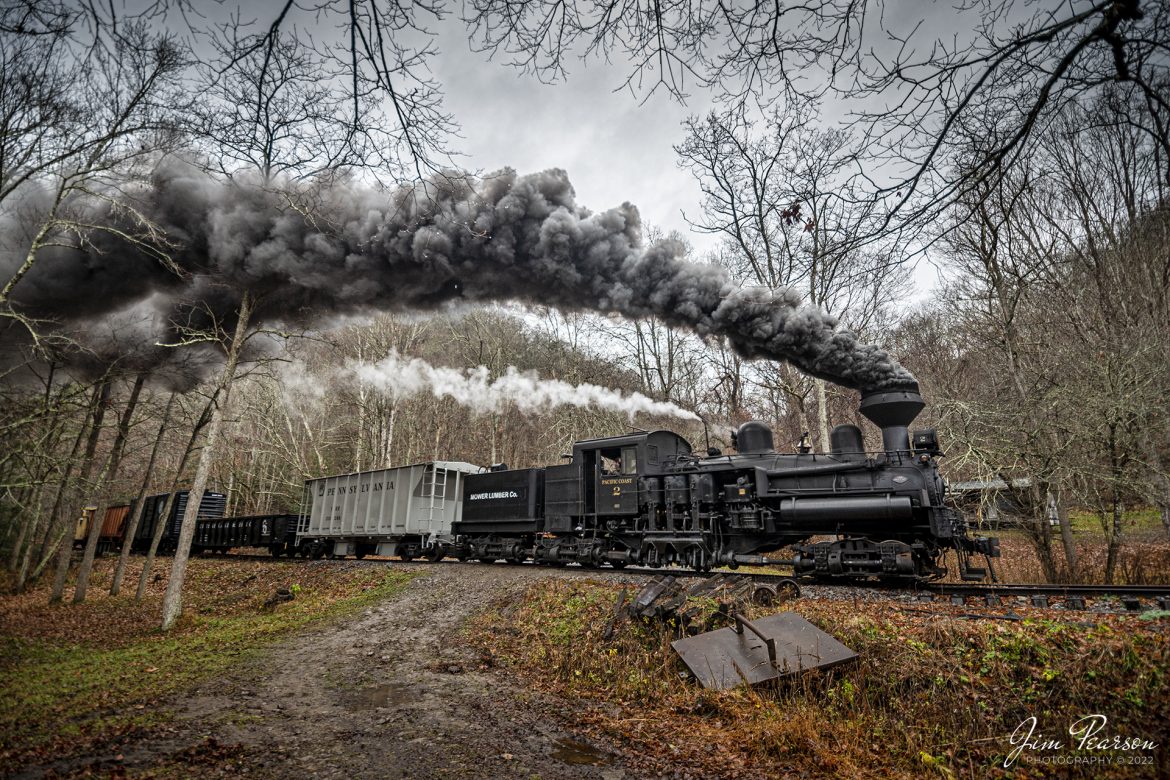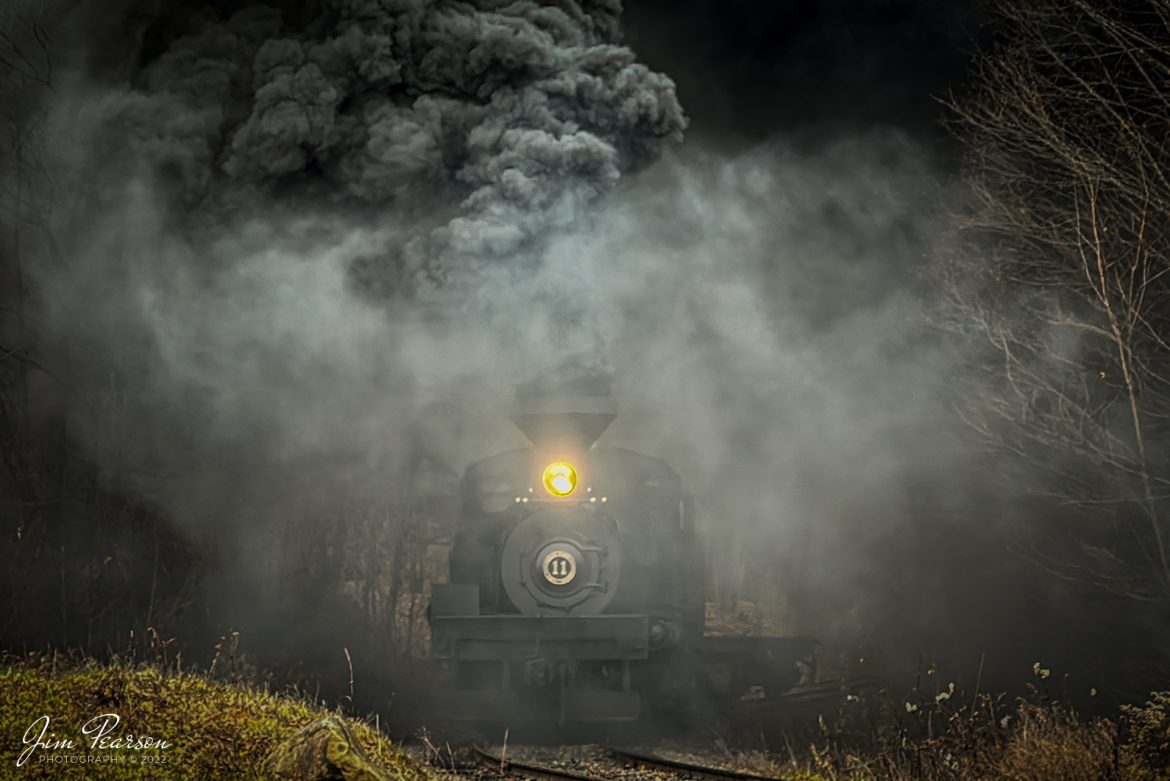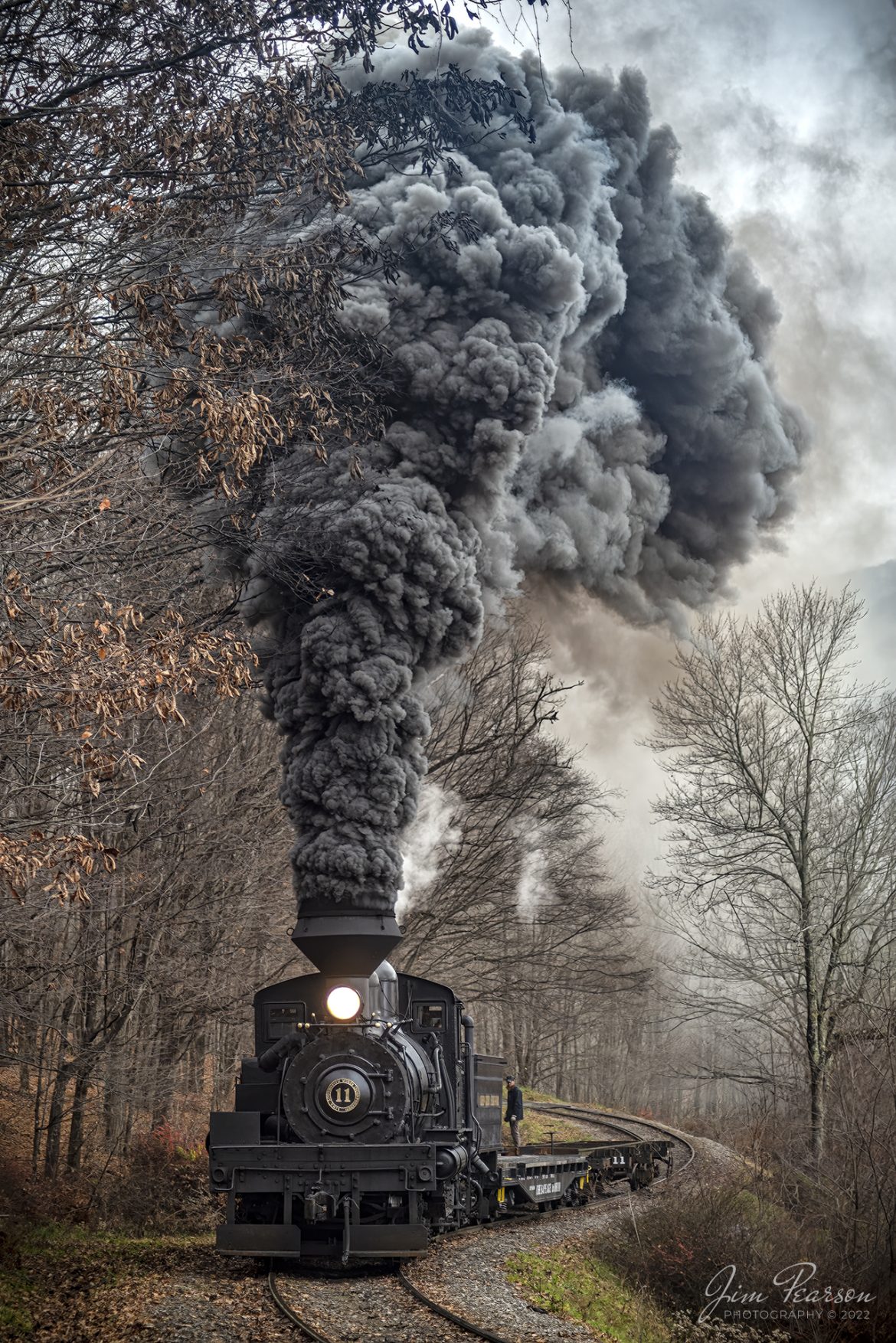Day 4 of 10 – Photography/Art Challenge
My Railroad Photography as Art
My niece Kelly Gates has nominated me to share my artwork for 10 days and to nominate another artist to do the same. My take on this challenge is to create what I consider photographic Art pieces from some of my railroad photography.
Now, I realize there are now AI programs out there these days that can create just about any type of art pieces for you with just words, but as most of you know I’m a visual person and all the pieces I post over the next 10 days will be created in Photoshop by me from photographs I have shot, not with AI Software.
I know that this type of art isn’t for everyone, but I do like to get outside the box and my comfort zone from time to time, as I think it’s good for my creative eye. I’d appreciate your constructive thoughts and comments!
For today’s digital photographic art piece, I’ve selected this shot from November 4th, 2022, of Meadow River Lumber Company steam locomotive, Heisler No. 6 as it passes through Nottingham, WV, during the Mountain Rail WV, Rail Heritage Photography Weekend. The event was held at the Durbin & Greenbrier Valley Railroad, Durbin, WV, and Cass Scenic Railroad, Cass, WV, from November 4-6th, 2022.
On Day 4 I nominate fellow railfan photographer Brian Caswell to share his art (whatever type he wants to share) ~ I know he has plenty as he hopefully joins in on the 10-day art challenge!!!!
Tech Info: DJI Mavic Air 2 Drone, JPG, 4.5mm (24mm equivalent lens) f/2.8, 1/1000, ISO 140.Available for purchase in my store at https://pixels.com/featured/sunset-arrival-of-northbound-csx-q512-01-jim-pearson.html

